Reeder Carbine Model One
I built a new weapon. I call it the RC1. Why that name? Because it’s easier to explain that this stands for Reeder Carbine Model One than to explain that PK6 (the other name candidate) stands for Piŝta Karabeno je 6,5mm Grendel.
Weapon design
tl;dr – It’s a shorter, lighter, piston-operated AR15 derivative with more firepower, ‘cause the peace ain’t gonna keep itself!
I want a gun that’s especially easy to handle in close-quarters combat without sacrificing effectiveness at medium range (up to 500 yards). While a PDW may be great in close quarters and an M4-style carbine is pretty good up to 300 yards, both are severely handicapped beyond that range. A PDW’s range suffers from its very short barrel, while carbines these days are typically held back by firing the diminutive 5.56x45 NATO cartridge. In either case, the energy of the bullet is insufficient to remain effective at my maximum intended distance against human targets and the occasional medium-size game animal. (Besides the obvious counterterrorism missions, I intend to hunt wolves, deer, and wild boar with this puppy.)
As an illustration that 5.56x45 won’t do, consider that at 500 yards it will have lost 68% of its kinetic energy, reducing it to just 541 ft·lb. While there’s no universal agreement on how much it takes to do the job well, I set my requirement at 800 ft·lb based on the guidance of Chuck Hawks. A 6.5 Grendel cartridge exceeds this slightly at 500 yards, giving 818 ft·lb; whereas the lighter and less streamlined 5.56mm cartridge can comply only out to 300 yards. (Calculations based on Wolf™ Military Classic cartridges — 6.5 Grendel, 100gr, 0.515 BC, 2723 ft/s MV; vs .223 Remington, 55gr, 0.395 BC, 3241 ft/s MV.)
So I’m targeting a length of 32” and a weight of 7 lb all-inclusive, using 17-round magazines of 6.5-Grendel ammunition.
The RC1 design is based somewhat on the Alexander™ Incursion Rifle, which is relatively light and fires one of the most effective general-purpose cartridges for modern carbines: the 6.5 Grendel. The Incursion, however, isn’t everything that I want it to be. It’s slightly longer than I prefer in close quarters. It still relies on the direct-impingement gas system that got M16 operators killed in Vietnam. And it’s got that mediocre mil-spec trigger.
But thanks to the versatility and popularity of Eugene Stoner’s modular AR-15 design —upon which the M16 and the Incursion are based—, we now have a standardized means of interchanging parts to meet the operator’s requirements. The RC1 takes advantage of this in several ways, such as the following:
-
Certain part selections, inspired by PDWs and by AR15A3-derived ultralight carbines, serve to make the RC1 lighter and more maneuverable.
-
A high-quality alternative trigger helps the operator make accurate shots.
-
The bolt is cycled by a gas piston, based on the Armalite™ AR-180 design, which has proven substantially more reliable than direct gas impingement.
Piston gas systems consistently outperform direct-impingement systems in reliability tests, as they did in a 2007 test by the U.S. Army.
The Product
I started this build with a lightweight M4-style receiver set and some Israeli magazines specific to the 6.5 Grendel cartridge.
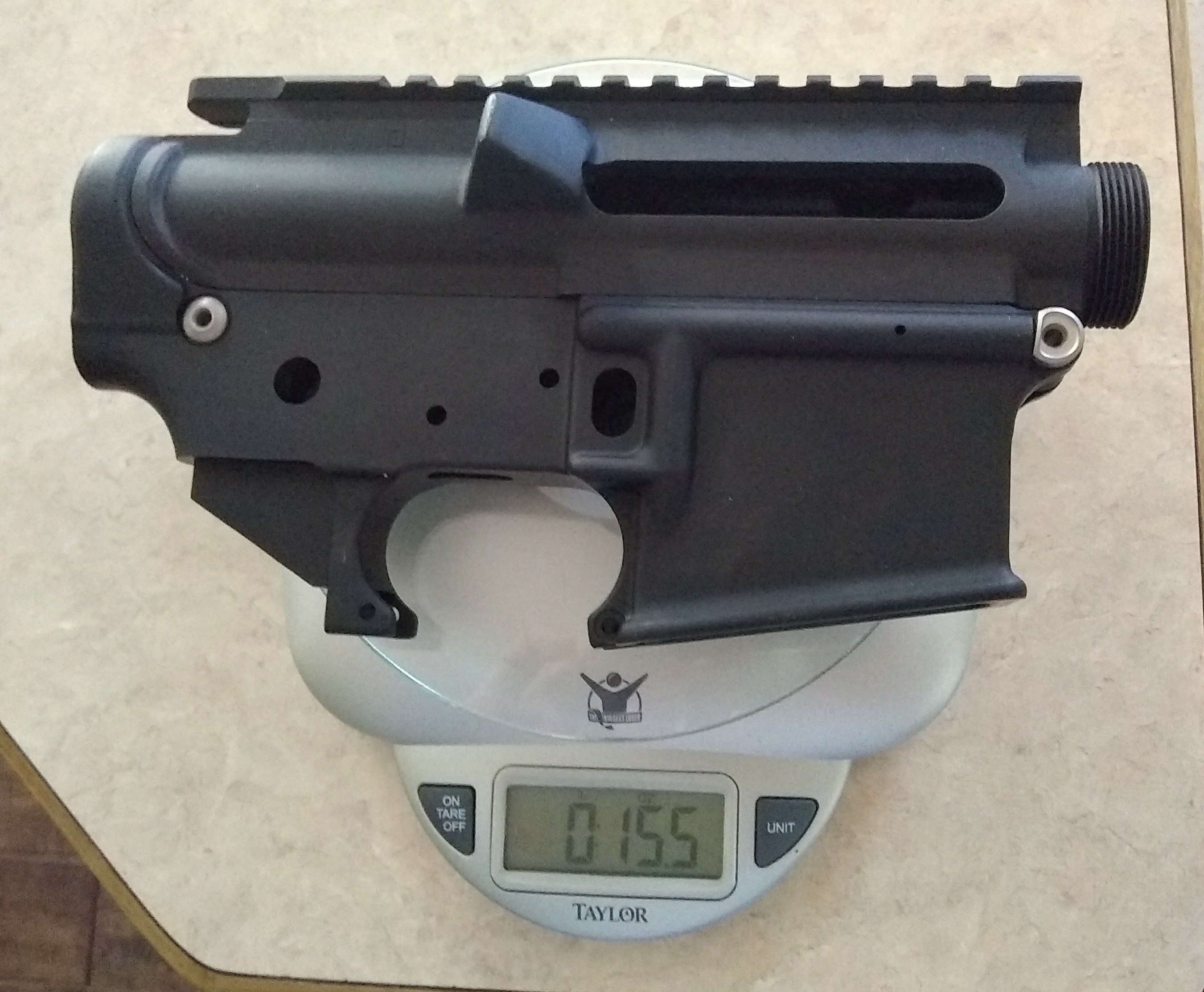
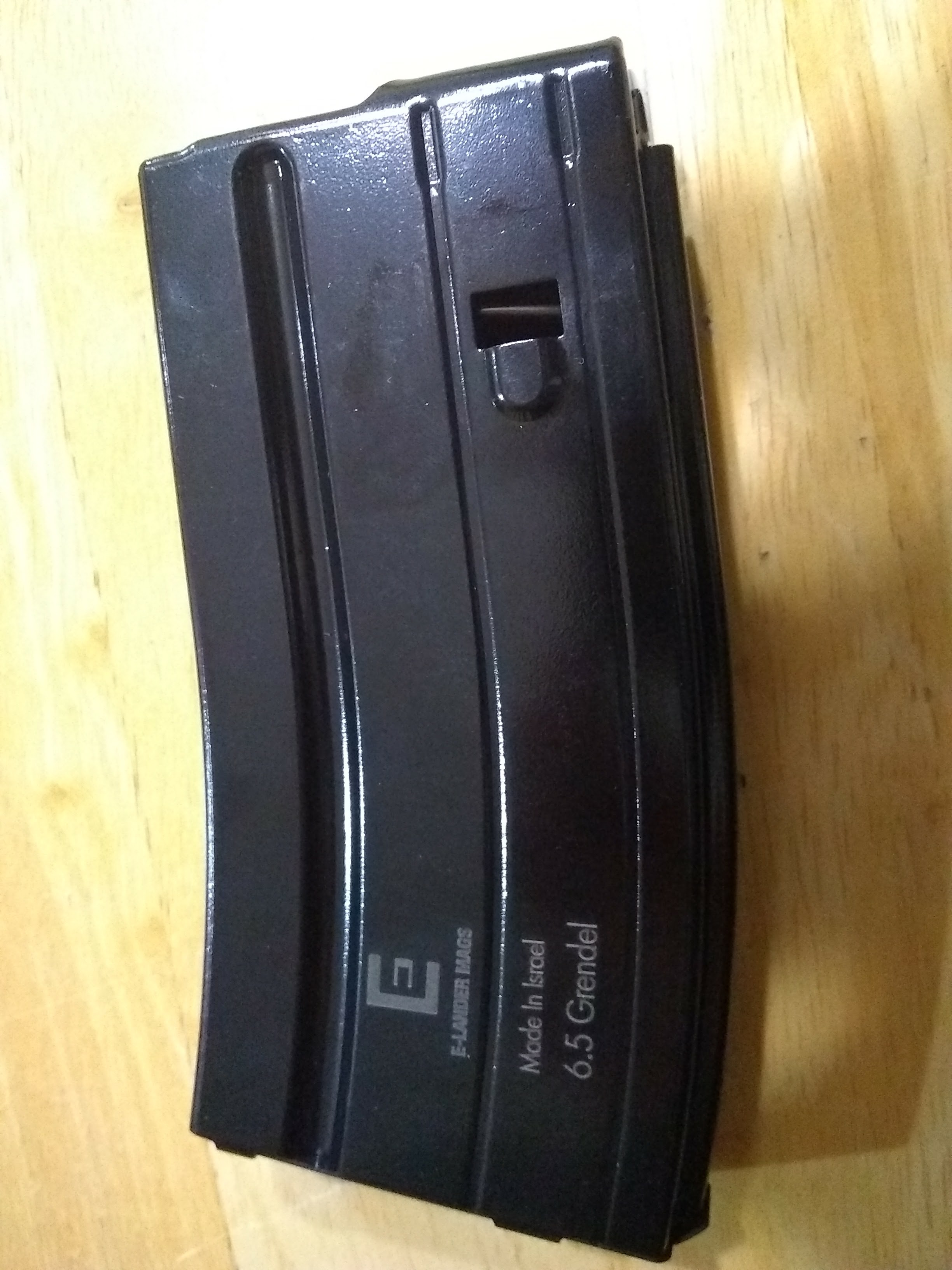 Receivers, pins, & magazine
Receivers, pins, & magazine
I got my hands on a 6.5-Grendel bolt and Incursion barrel from Alexander Arms. This barrel comes in the standard 16” carbine length, just long enough to avoid the red tape associated with a short-barreled rifle. This length also produces high enough muzzle velocity and bullet energy for practical medium-range use.
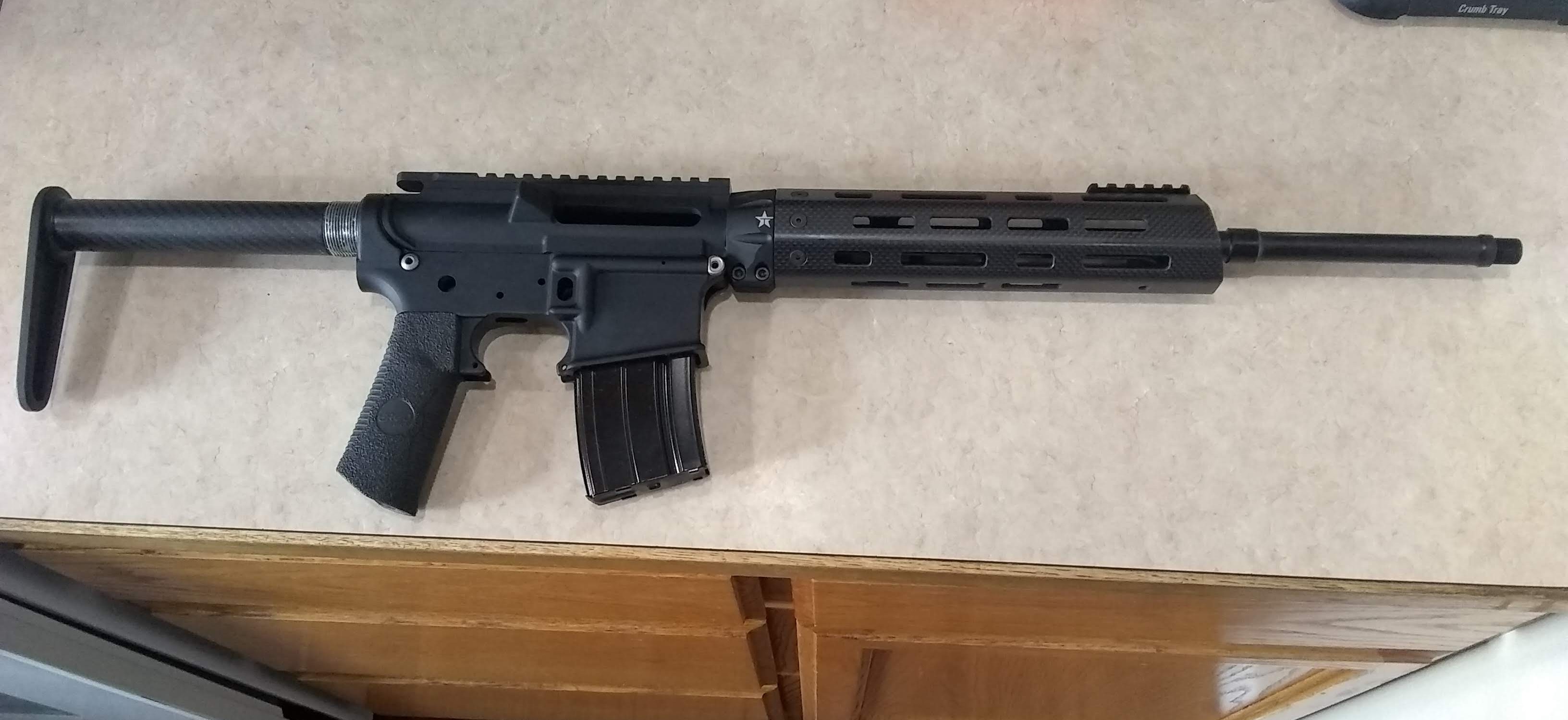 Buttstock, grip, & barrel
Buttstock, grip, & barrel
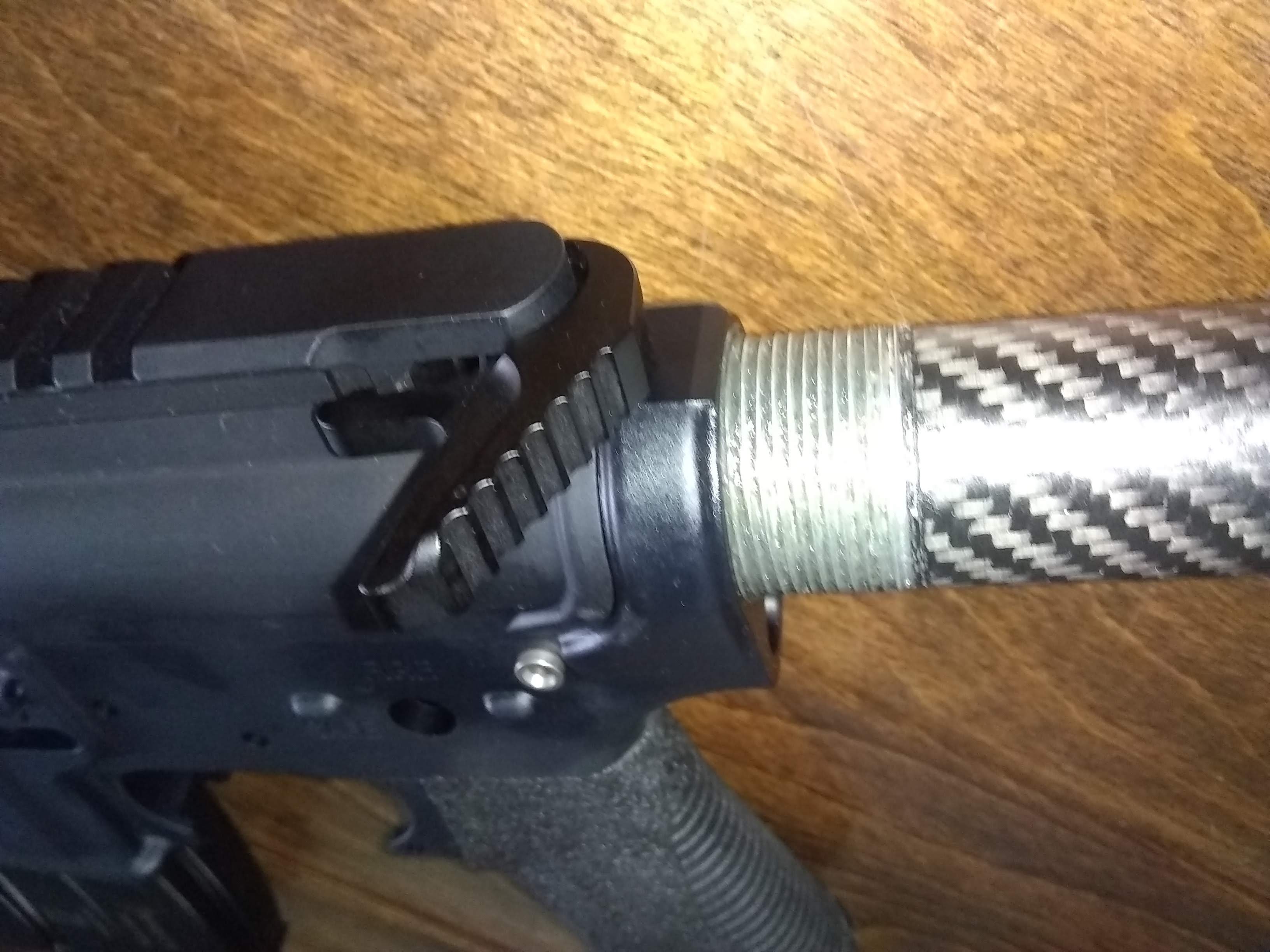
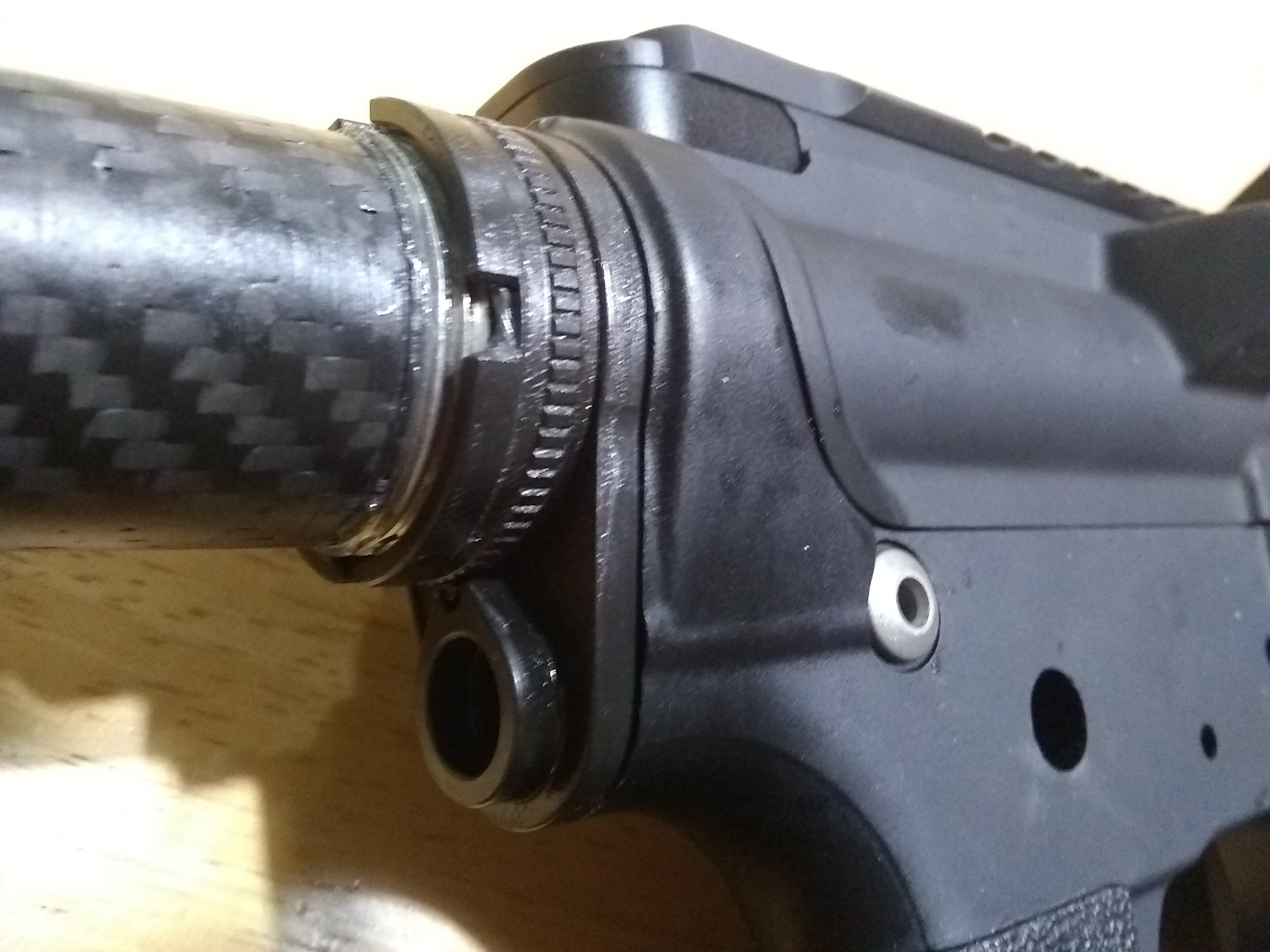 Charging handle & endplate
Charging handle & endplate
This weapon has a very short, fixed-length buttstock to shift its mass closer to the operator’s body where it’s more easily supported. If it had the 33° grip angle that’s most common in modern carbines, then the short stock would make it uncomfortable for the wrist of the operator’s dominant hand; so the grip is instead nearly vertical (a mere 13°) as in a PDW. The RC1 is meant to be as lightweight as practicable, in order to limit muscle fatigue so the shooter can more easily keep his sights steady on the target.
The trigger is smooth to operate and relatively light, with a 4-lb pull weight. The fire selector operates with just 57° of rotation so we don’t have to bother with a full 90° before gettin’ down to business. The bolt-release paddle is enlarged to give me an easier target to smack. Inside the buffer tube is a multi-stage recoil spring meant for smoother operation with less felt recoil.
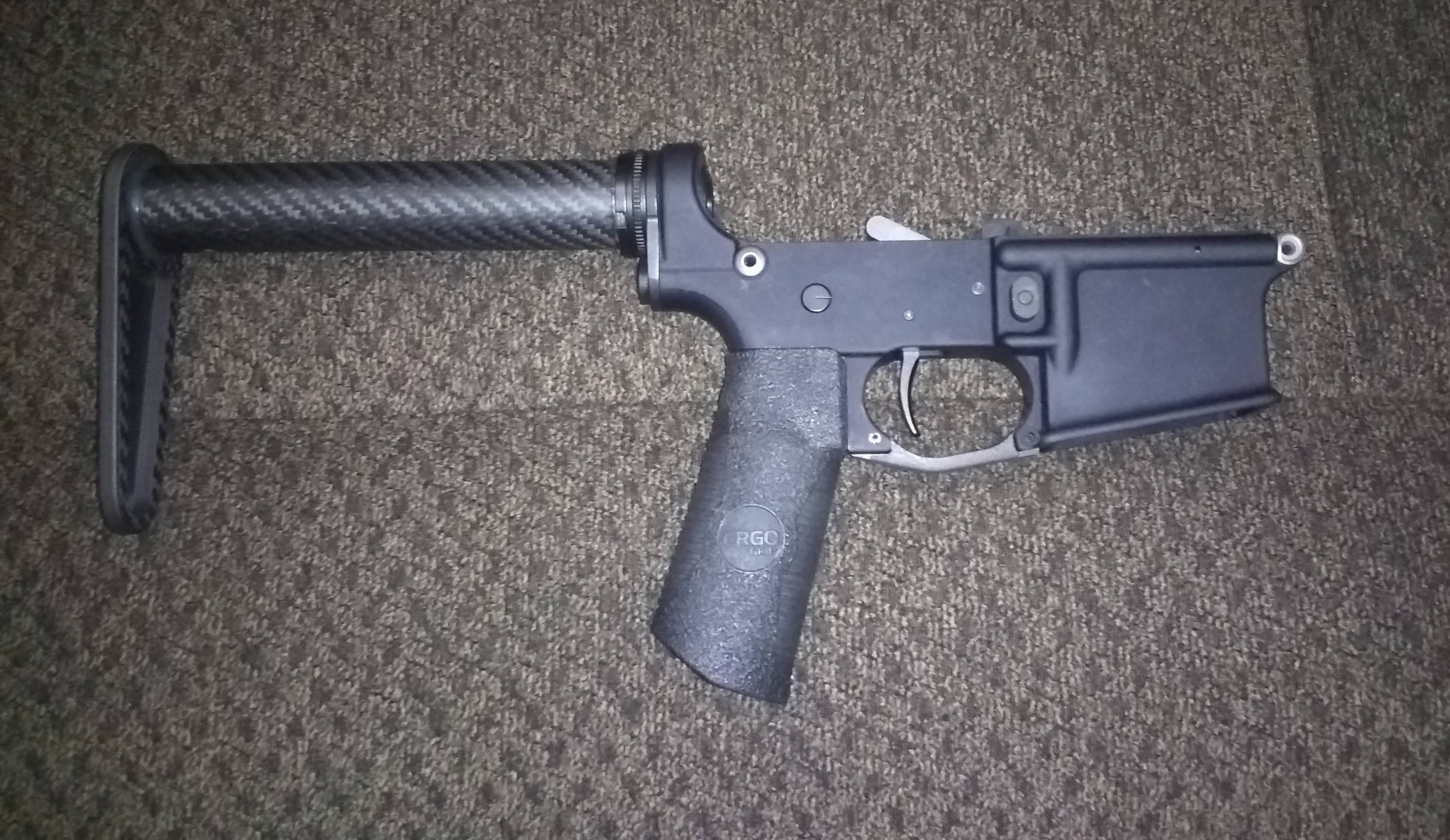 Light trigger & custom guard, selector, mag release, & assorted lower innards
Light trigger & custom guard, selector, mag release, & assorted lower innards
A custom oversized mag-well makes for fast magazine changes.
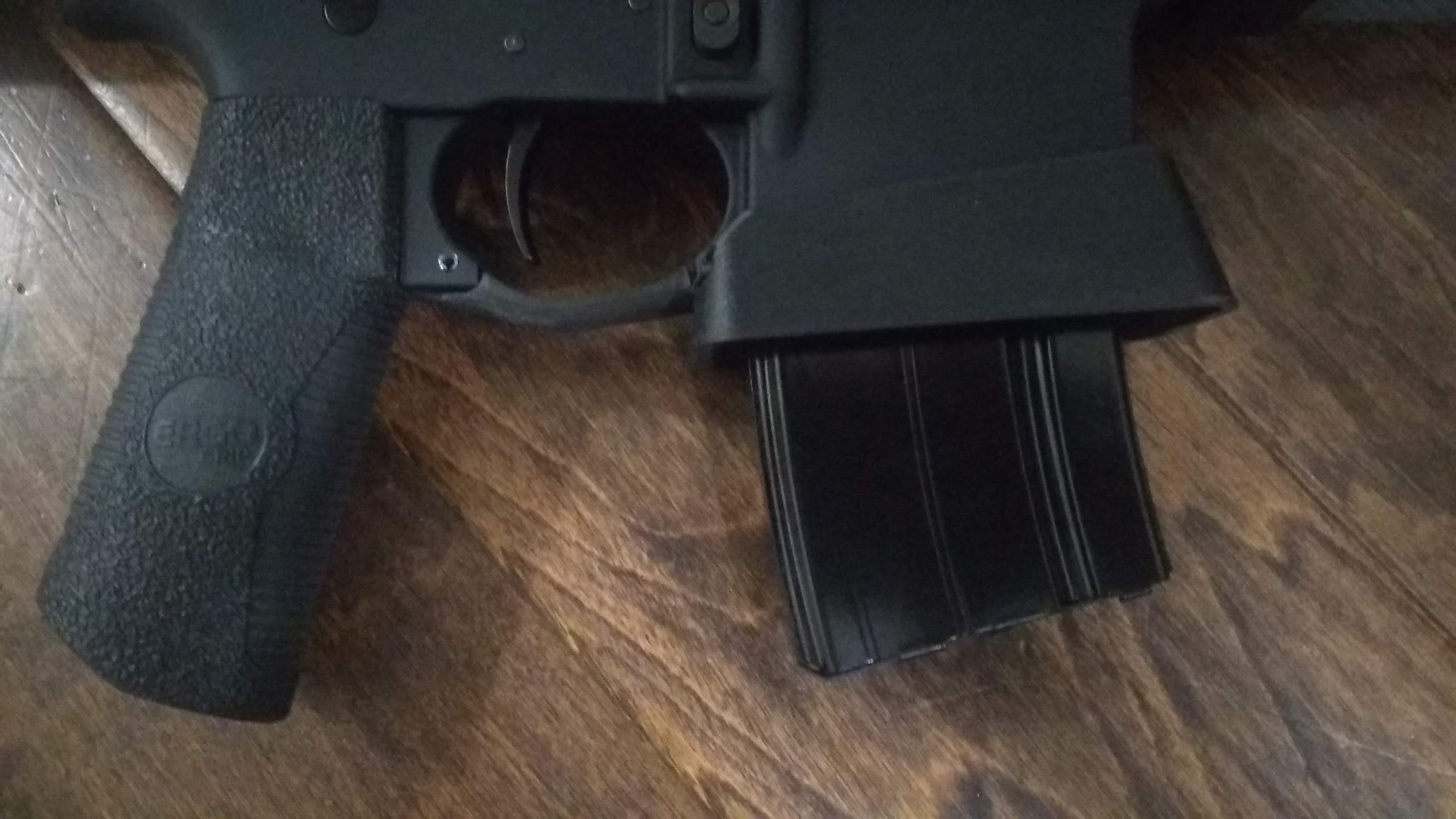 Flaired magazine well
Flaired magazine well
The RC1 will be equipped with two sighting systems:
- A lightweight fixed-power riflescope (not yet mounted), for precise targeting
- Simple offset iron sights, mostly for quick target acquisition within 80 yards
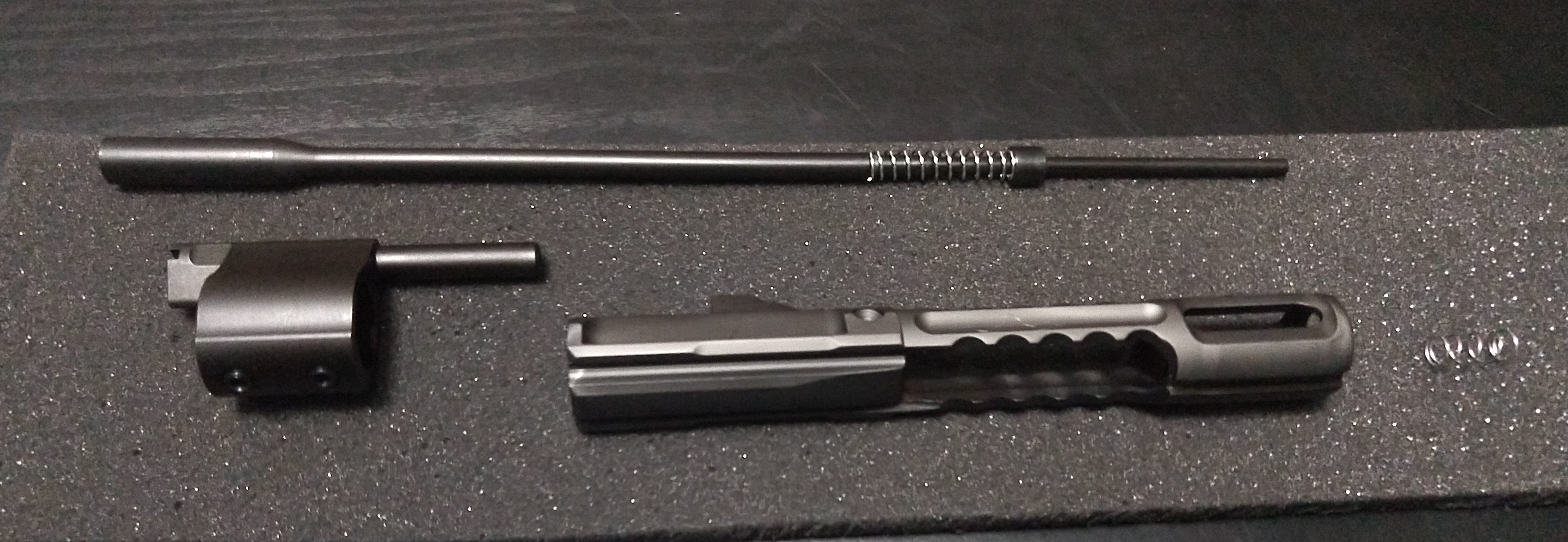
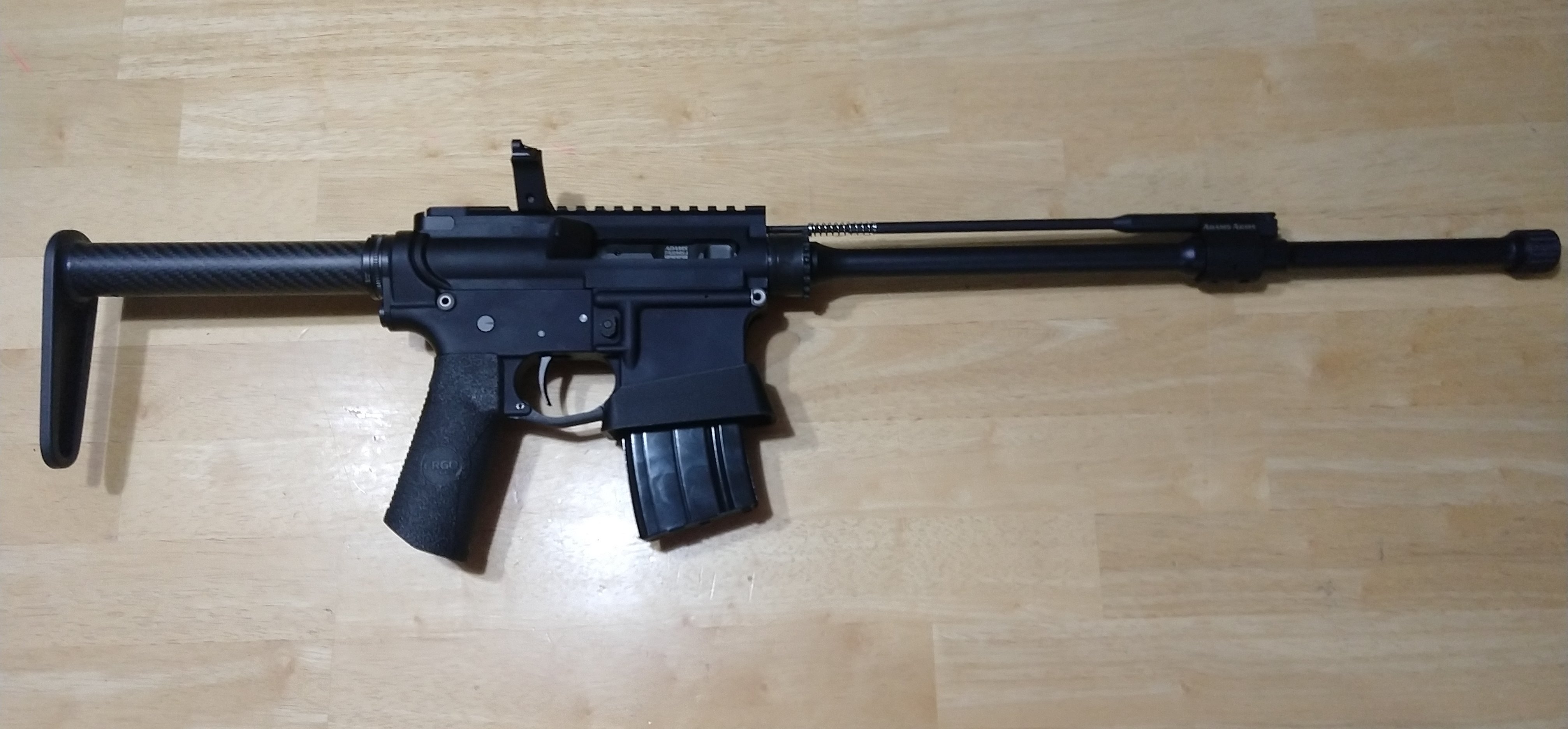 Piston kit & rear sight
Piston kit & rear sight
To keep the overall length to a minimum, a simple thread protector is mounted on the barrel in lieu of a muzzle device.
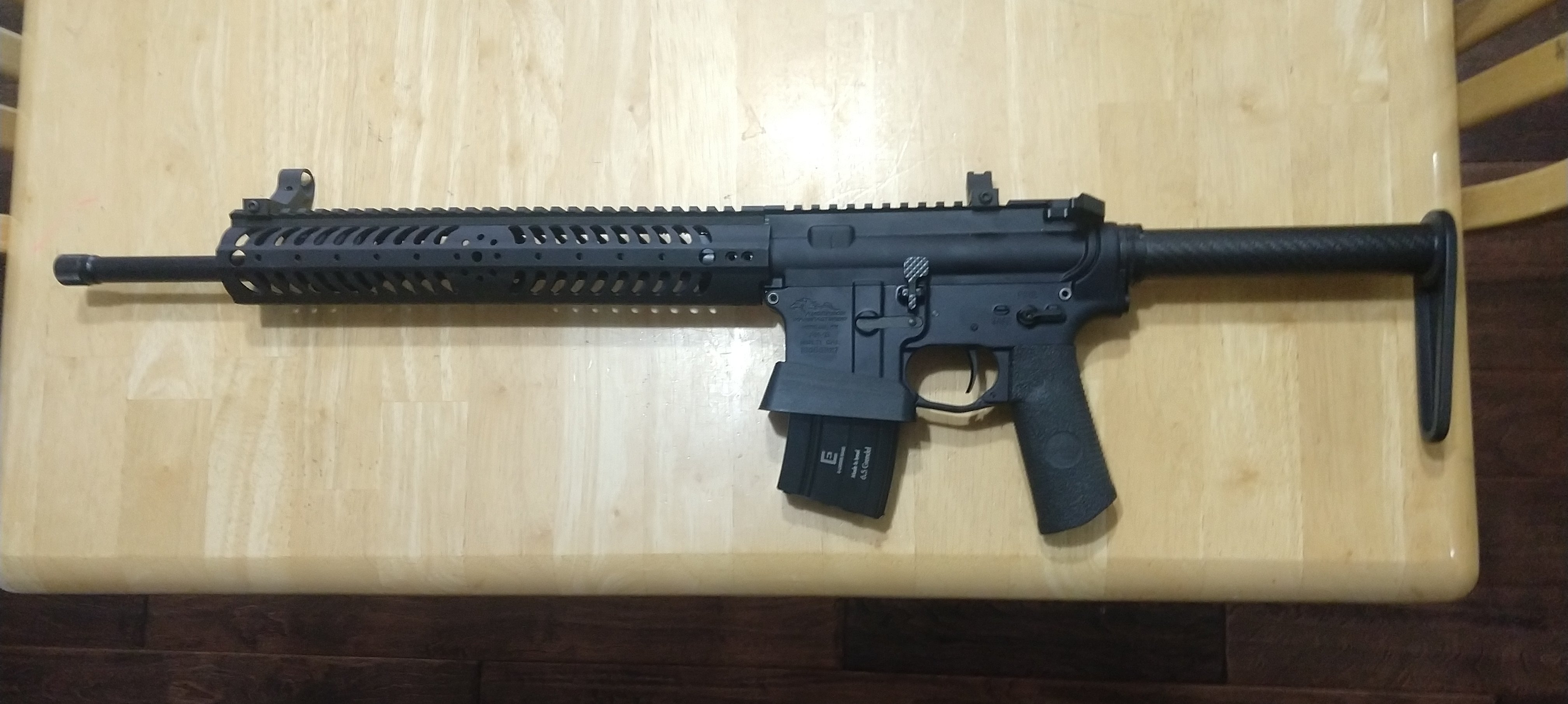 Handguard, front sight, & thread protector
Handguard, front sight, & thread protector
Upon firing, the gun wouldn’t automatically load the next cartridge at first. And charging the weapon manually was much harder than it ought to be. The buffer tube seems to be a little shorter than standard, so the springs were overly compressed. I resolved these troubles by replacing the original recoil spring with a custom-tuned JP™ Silent Captured Spring.
The gun now functions properly. Its total length is 31 5/16”. Good, it’s under 32” like I wanted.
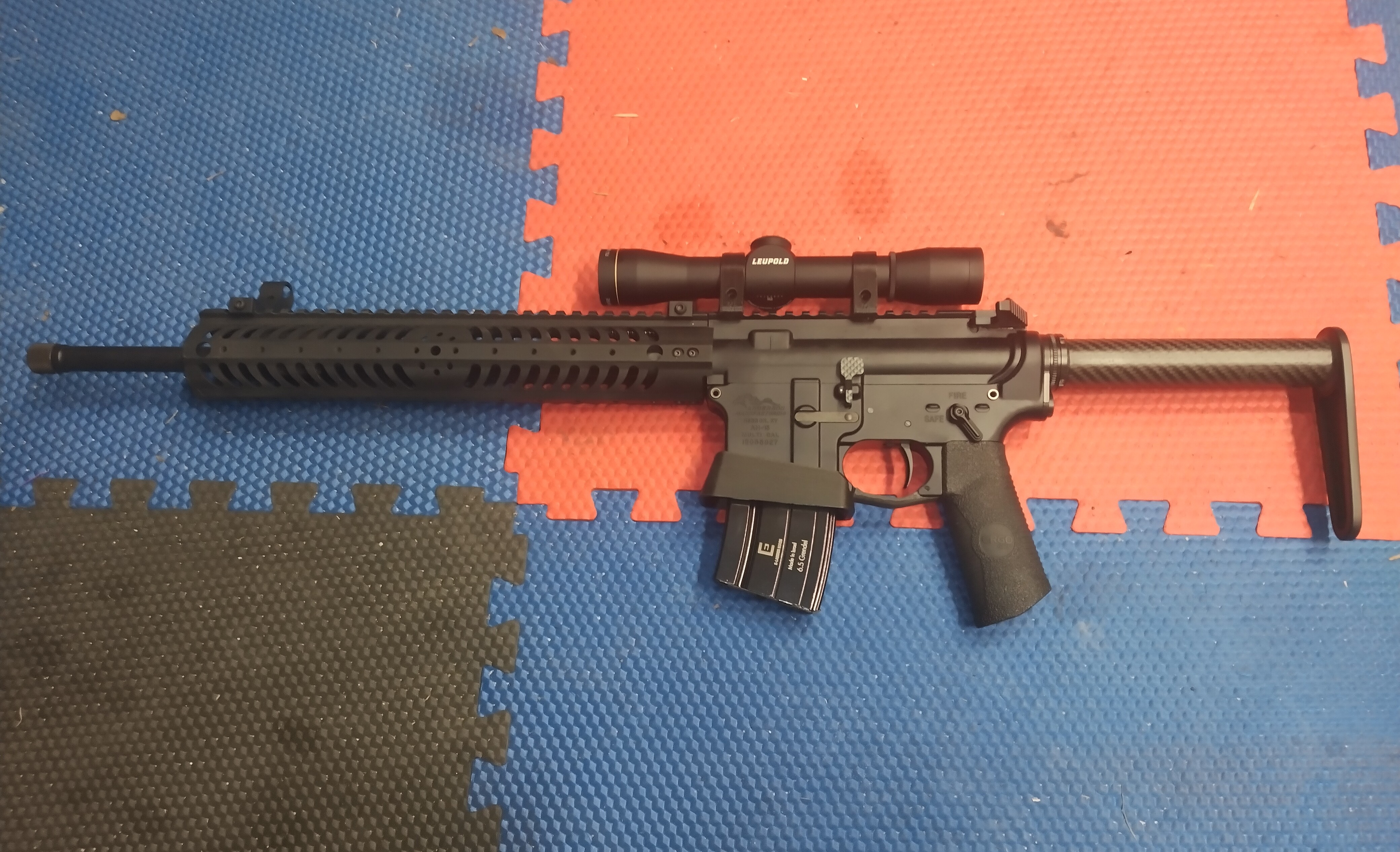 4x Scope
4x Scope
Total weight, with a scope and a full magazine, is 6 lb 15.4 oz. Good, it’s under 7 lb like I wanted. Perhaps I can just afford the weight of a custom minimalist foregrip.
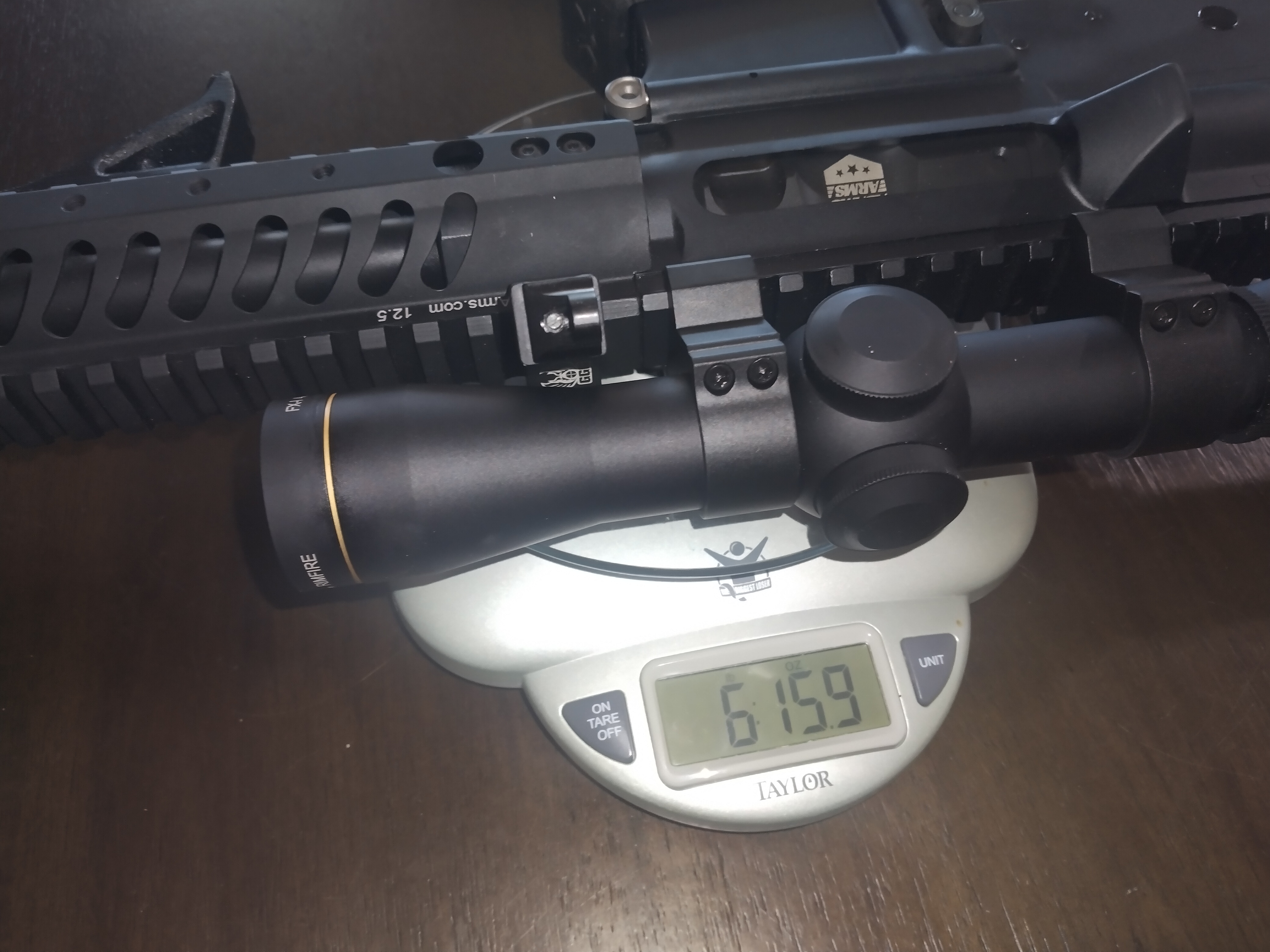
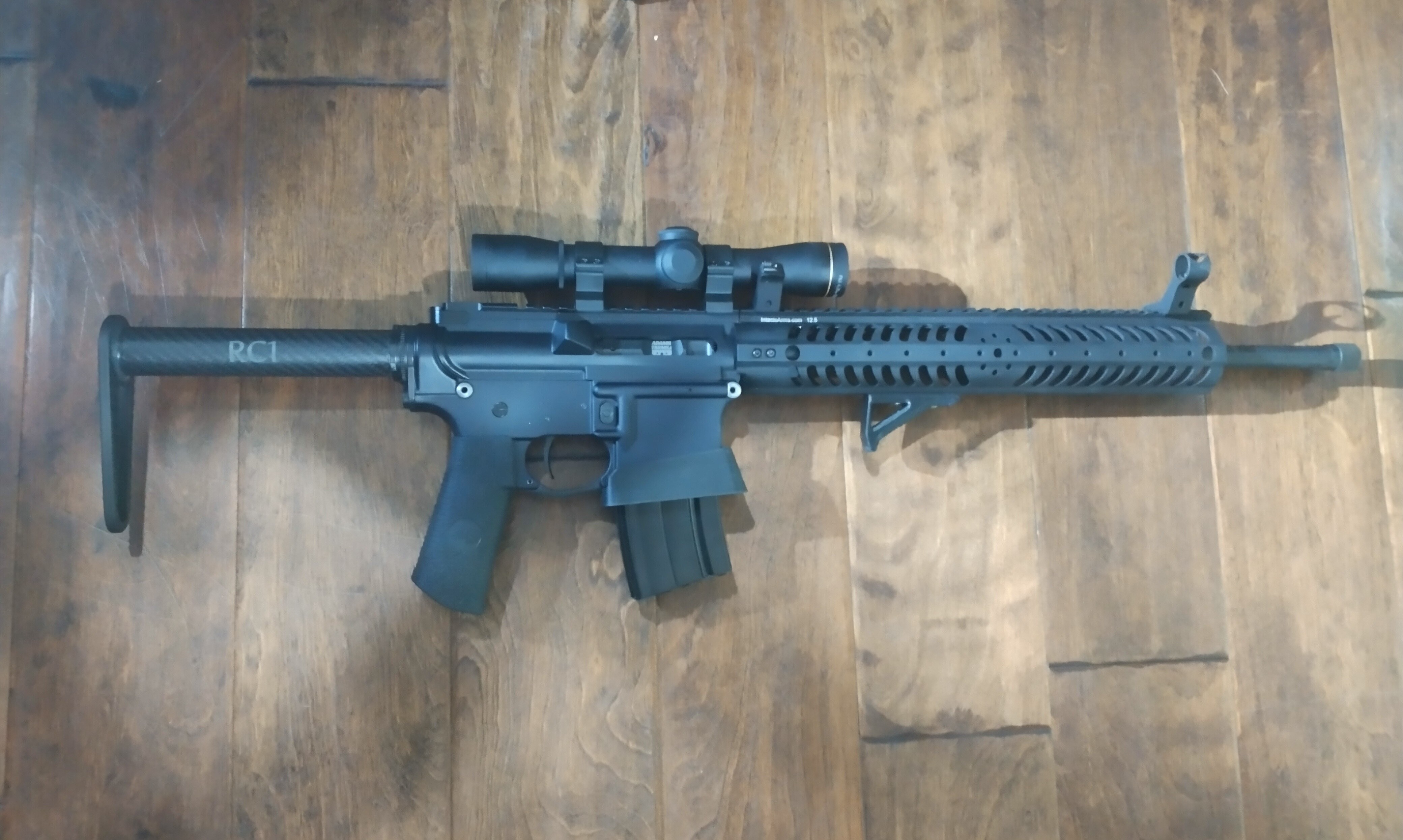 RC1 Decal & Custom Foregrip
RC1 Decal & Custom Foregrip
Bam! I like my new gun.
RC1 Performance
Performance test coming soon.
Swag for the Fan Club
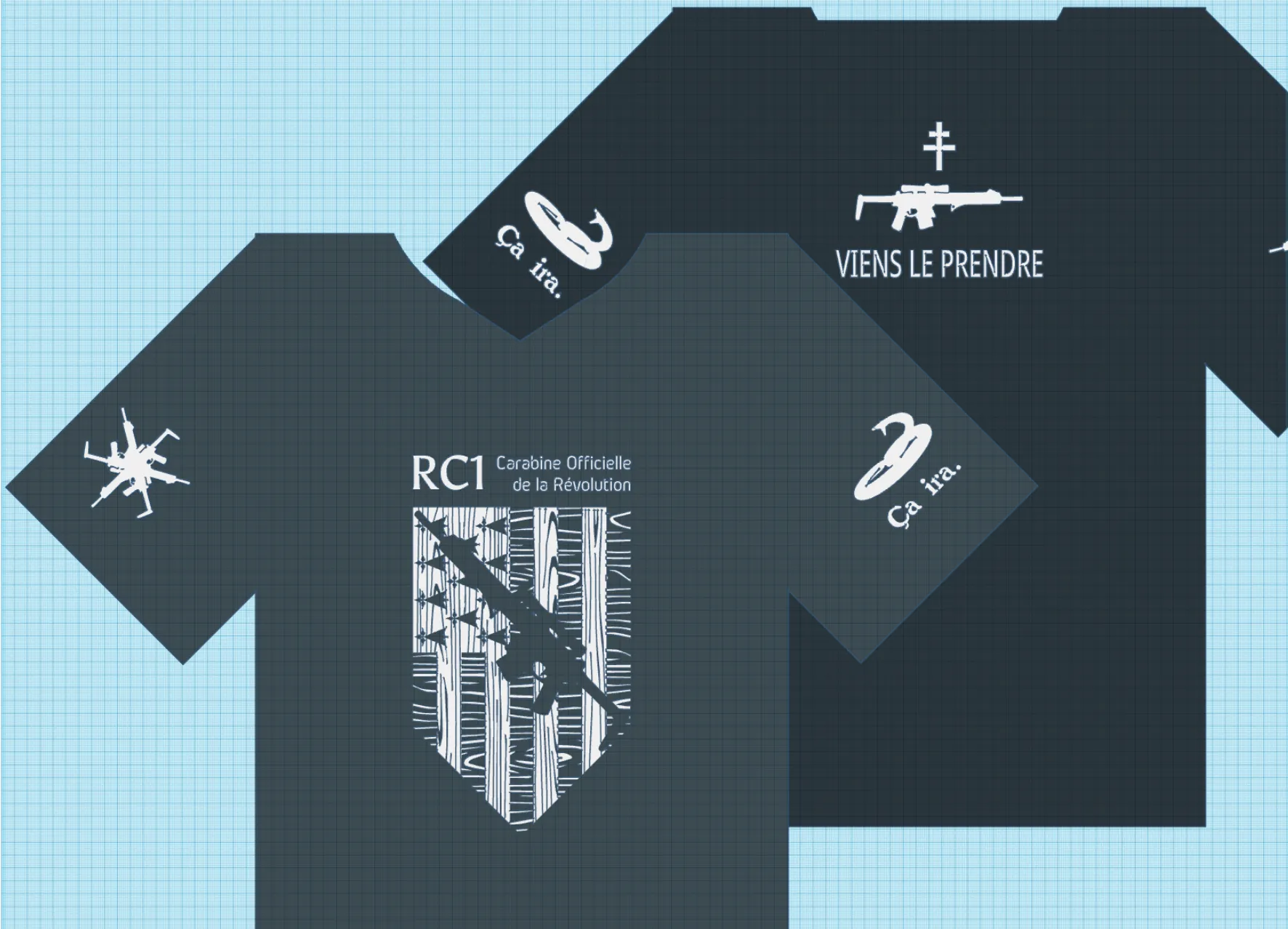 Carabine Officielle de la Révolution
Carabine Officielle de la Révolution
If you want some swag, here are the designs so you can make it yo’self.